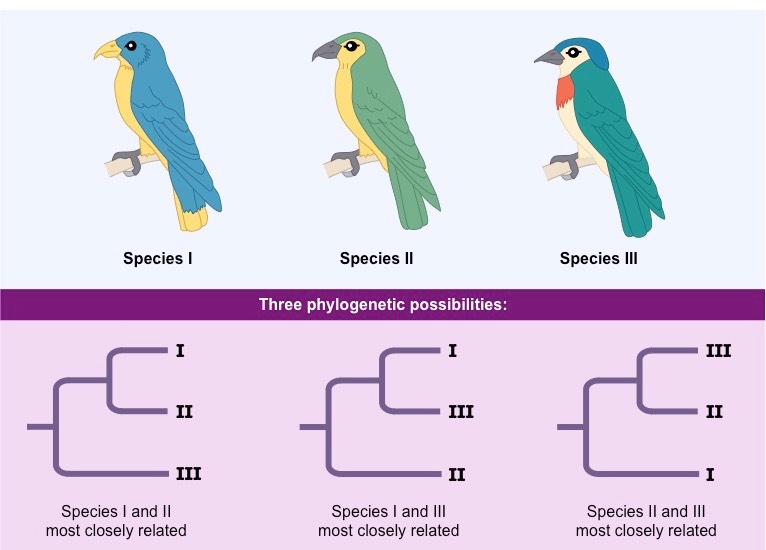![]()
Understanding:
• A clade is a group of organisms that have evolved from a common ancestor
Cladistics is a method of classifying organisms into groups of species called clades (from Greek ‘klados' = branch)
- Each clade consists of an ancestral organism and all of its evolutionary descendants
- Members of a clade will possess common characteristics as a result of their shared evolutionary lineage
Clades can be organised according to branching diagrams (cladograms) in order to show evolutionary relationships
Examples of Clades


⇒ Click on the diagram to show different modes of representation
![]()
Understanding:
• Cladograms are tree diagrams that show the most probable sequence of divergence in clades
Cladograms are tree diagrams where each branch point represents the splitting of two new groups from a common ancestor
- Each branch point (node) represents a speciation event by which distinct species are formed via divergent evolution
Cladograms show the probable sequence of divergence and hence demonstrate the likely evolutionary history (phylogeny) of a clade
- The fewer the number of nodes between two groups the more closely related they are expected to be
Phylogenetic Comparison of Cladograms

![]()
Application:
• Cladograms including humans and other primates
Cladograms can show evolutionary relationships and demonstrate how recently two groups shared a common ancestry
- As each node represents a point of divergence, closely related species will be separated by fewer nodes
According to a cladogram outlining the evolutionary history of humans and other primates:
- Humans, chimpanzees, gorillas, orangutans and gibbons all belong to a common clade – the Hominoids
- The Hominoid clade forms part of a larger clade – the Anthropoids – which includes Old World and New World monkeys
Cladogram Example: Humans and Other Primates

